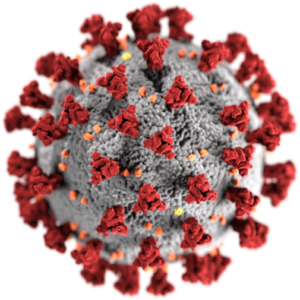There has been a lot of interest in coronavirus disease 2019 (COVID-19), an infectious disease caused by a virus (SARS-CoV-2) which has spread globally and become a pandemic. Measures have been put in place all over the world to slow the transmission of the disease which have impacted our lives today. We’ll talk a little about it here in the context of an infectious disease caused by a virus.
A virus is piece of genetic material (i.e. DNA or RNA) with a protective envelope. This genetic material has the blueprints to produce more copies of the virus, but first it must get inside a cell in order to hijack the machinery within the cell to make more copies of the virus (i.e. DNA/RNA and protective envelopes, and assemble them for release). A virus cannot replicate outside of a cell because it lacks the machinery needed to produce or assemble new virus particles.
To get into a cell, the virus must be introduced into the human body. SARS-CoV-2 is spread by close contact and respiratory droplets produced by coughs or sneezes – we must breathe in or swallow the virus to take it into our bodies. It then must find a way to enter the cells. It does this by the infamous “spike protein”, a part of the protective envelope shaped in a specific way (the red spikes in the picture above). This protein binds to the angiotensin converting enzyme 2 receptor that many cells have on their surface like a lock and key – it sticks to this receptor, turns it on and the receptor pulls the virus particle into the cell, where it can use the internal organelles of the cell to reproduce. The virus particles then leave the cell through different ways and spread further, both within the human body it is already within and to other humans too (known as viral shedding).
So remember, listen to the government’s advice and stay safe; wash your hands as soon as you get home and for 20 seconds (as this destroys the virus before it can enter through our mouth or nose), stay at home unless going outside for food and health reasons, and if you go out stay 2 metres away from other people (i.e. social distancing).
Stay safe and take care!
References: – Biology text book- B6.3 topic



